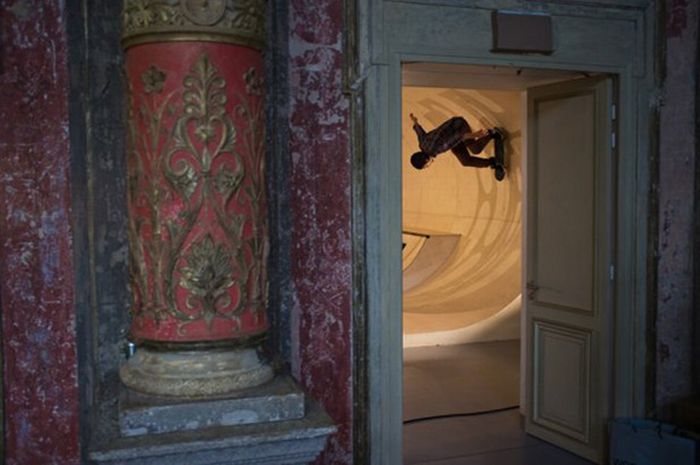|
|
Skateboarding Room
|
This period was fueled by skateboard companies that were run by skateboarders. The focus was initially on vert ramp skateboarding. The invention of the no-hands aerial (later known as the ollie) by Alan Gelfand in Florida in 1976 and the almost parallel development of the grabbed aerial by George Orton and Tony Alva in California made it possible for skaters to perform airs on vertical ramps. While this wave of skateboarding was sparked by commercialized vert ramp skating, a majority of people who skateboarded during this period never rode vert ramps. Because most people could not afford to build vert ramps or did not have access to nearby ramps, street skating gained popularity.
Freestyle skating remained healthy throughout this period with pioneers such as Rodney Mullen inventing many of the basic tricks of modern street skating such as the Impossible and the kickflip. The influence freestyle had on street skating became apparent during the mid-eighties, but street skating was still performed on wide vert boards with short noses, slide rails, and large soft wheels. Skateboarding, however, evolved quickly in the late 1980s to accommodate the street skater. Since few skateparks were available to skaters at this time, street skating pushed skaters to seek out shopping centers and public and private property as their "spot" to skate. Public opposition, and the threat of lawsuits, forced businesses and property owners to ban skateboarding on their property. By 1992, only a small fraction of skateboarders remained as a highly technical version of street skating, combined with the decline of vert skating, produced a sport that lacked the mainstream appeal to attract new skaters.
• The 1990s–present
The current generation of skateboards is dominated by street skateboarding. Most boards are about 71⁄4 to 8 inches (180 to 200 mm) wide and 30 to 32 inches (760 to 810 mm) long. The wheels are made of an extremely hard polyurethane, with hardness (durometer) approximately 99A. The wheel sizes are relatively small so that the boards are lighter, and the wheel's inertia is overcome quicker, thus making tricks more manageable. Board styles have changed dramatically since the 1970s but have remained mostly alike since the mid 1990s. The contemporary shape of the skateboard is derived from the freestyle boards of the 1980s with a largely symmetrical shape and relatively narrow width. This form had become standard by the mid '90s.
|
|









